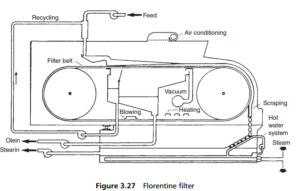0
-
An empty cart
You have no item in your shopping cart
envato-wordpress-toolkit domain was triggered too early. This is usually an indicator for some code in the plugin or theme running too early. Translations should be loaded at the init action or later. Please see Debugging in WordPress for more information. (This message was added in version 6.7.0.) in /var/www/wp-includes/functions.php on line 6121g5plus-darna domain was triggered too early. This is usually an indicator for some code in the plugin or theme running too early. Translations should be loaded at the init action or later. Please see Debugging in WordPress for more information. (This message was added in version 6.7.0.) in /var/www/wp-includes/functions.php on line 6121In the production of edible oils from oil seeds and oil-rich fruits it is necessary to process the crude oil to separate pure oil (olein) from the crystalline solids (stearin), the amount of each depending on the temperature of the process. The growing importance of palm oil processing meant that the traditional rotary vacuum filter was not sufficiently effective in this separation, and the Florentine filter was developed to enable higher processing rates in a continuous flow. This ‘dry’ fractionation step is used in the treatment of a wide range of oils and fats, from 2°C (hardened soybean oil) up to 45°C (tallow).
The Florentine filter has a stainless steel belt, which acts as the sole filtering medium (as shown in Figure 3.27). The belt is stretched between two driving drums and passes over the horizontal opening of a tank held under vacuum. The design of
the belt is such that olein will drain through it even when the viscosity is high. The top of the filtration zone is air conditioned to a temperature just above that of the crystallized oil, so as to prevent the crystals from melting or an increase of viscosity. To eliminate any particles that may be driven through the first section of the belt a recycling tank collects the first filtered olein, which is then pumped back to the feed line. Filtration takes place beyond the recycling tank over what can be termed a continuous precoat.
This is a special type of filtration system that can separate large amounts of solids, as high as 60 or 70%. However it is only usually supplied as part of a specific filtration

process, where crystallization of the mother liquid is very important. The development of the diaphragm filter press has taken some of the dry fractionation business from this type of vacuum filter.